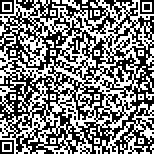下载中心
优秀审稿专家
优秀论文
相关链接
摘要

根据星载合成孔径雷达 (SAR)浅海水下地形和水深成像机理, 建立了浅海水下地形和水深雷达后向散射截面仿真模型。该模型包括奈维 斯托克斯方程、谱作用量平衡方程和雷达后向散射模式。利用该模型仿真结果, 探讨了不同波段 (P、L、C和X)、不同极化 (VV和HH)和不同入射角 (20°- 70°)的星载SAR测量浅海水下地形和水深的能力。研究结果表明, 浅海水下地形和水深遥感的最佳波段为P波段, L波段次之, C波段比X波段要好一些。VV极化SAR的测量能力要强于HH极化。 20°- 40°是星载SAR测量浅海水下地形和水深的最佳入射角范围。
A simulation model for the radar backscattering cross section of the sea surface has been developed based on the radar imaging mechanism of underwater bottom topography. The model consists of the Navier Stokes equation, the action balance equation and the radar backscatter model. The simulation model is solved numerically using the method of characteristics. The results of the simulation model have been used to study the optimal SAR parameters (frequency, polarization and incidence angle) for mapping underwater bottom topography. It is shown that long wavelengths are required. P band is the optimal band for mapping underwater bottom topography, followed by L, C and X bands. Although mapping underwater bottom topography is independent of the polarization, the VV polarization is the best choice because of its large signal to noise ratio. The incidence angles between 20° to 40° are needed to map underwater bottom topography by spaceborne SAR.

